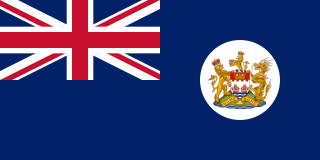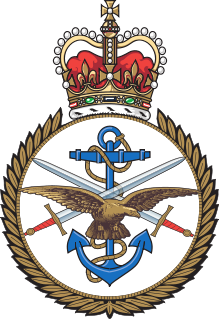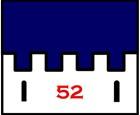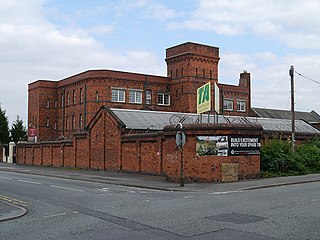Options for Change was a restructuring of the British Armed Forces in summer 1990 after the end of the Cold War.

The Lancashire Fusiliers was a line infantry regiment of the British Army that saw distinguished service through many years and wars, including the Second Boer War, the First and Second World Wars, and had many different titles throughout its 280 years of existence. In 1968 the regiment was amalgamated with the other regiments of the Fusilier Brigade – the Royal Northumberland Fusiliers, Royal Warwickshire Fusiliers and the Royal Fusiliers – to form the current Royal Regiment of Fusiliers.

British Forces Overseas Hong Kong comprised the elements of the British Army, Royal Navy and Royal Air Force stationed in British Hong Kong. The Governor of Hong Kong also assumed the position of the Commander-in-chief of the forces and the Commander British Forces in Hong Kong took charge of the daily deployment of the troops. Much of the British military left prior to the handover of Hong Kong to China in 1997. The present article focuses mainly on the British garrison in Hong Kong in the post Second World War era. For more information concerning the British garrison during the Second World War and earlier, see the Battle of Hong Kong.

The King's Division is a British Army command, training and administrative apparatus designated for infantry regiments in the North of England.

British Forces Cyprus (BFC) is the name given to the British Armed Forces stationed in the UK Sovereign Base Areas of Akrotiri and Dhekelia on the island of Cyprus and at a number of related 'retained sites' in the Republic of Cyprus. The United Kingdom retains a military presence on the island in order to keep a strategic location at the eastern end of the Mediterranean, for use as a staging point for forces sent to locations in the Middle East and Asia. BFC is a tri-service command, with all three services based on the island reporting to it.

11th Security Force Assistance Brigade is a British regular British Army brigade that forms part of 1st Division. As 11th Infantry Brigade and Headquarters South East it had regional responsibilities across the South East of England being the "regional point of contact for the 8 counties of the South East of England".

The 42nd Infantry Brigade, also known as 42 Brigade, was a brigade of the British Army.

The 52nd Infantry Brigade was a formation of the British Army, which was first formed in 1914 as part of Kitchener's Army. The brigade was disbanded in 1919, but reformed in British India during the Second World War and disbanded in 1945. It was again formed in 1982, and existed until 2010.

Clive Barracks is a military installation at Ternhill in Shropshire in Western England.

The regimental depot of a regiment is its home base for recruiting and training. It is also where soldiers and officers awaiting discharge or postings are based and where injured soldiers return to full fitness after discharge from hospital before returning to full duty. Normally, a variety of regimental stores will also be kept at the depot. The regimental depot is not the same as the regimental headquarters, though in practice the two will often be co-located in the same place.
In September 1939, the British Army was in process of expanding their anti-aircraft and mobile assets. Among these new changes was the formation of Anti-Aircraft Command which was formed on 1 April 1939, and the 1st Armoured Division formed in 1937. The list below will include the British Army units, colonial units, and those units which were in the process of formation.

Fulwood Barracks is a military installation at Fulwood in Preston, Lancashire, England.

Peninsula Barracks is a military installation on O'Leary Street in Warrington, England.

The organization of the British Army will be reorganized in 2022 with the Future Soldier reform. The British Army is commanded by the Chief of the General Staff with Army Headquarters is located in Andover, Hampshire. Subordinate to that post there is a Commander Field Army and a personnel and UK operations command, Home Command.
The Lancashire Militia was an auxiliary military force in Lancashire in North West England. From their formal organisation as Trained Bands in 1558 and their service in the Williamite War in Ireland and against the Jacobite Risings, the Militia regiments of Lancashire served during times of international tension and all of Britain's major wars. They provided internal security and home defence but sometimes operated further afield, including Ireland and the Mediterranean, relieving regular troops from routine garrison duties, and acting as a source of trained officers and men for the Regular Army. All the infantry battalions went on active service during the Second Boer War and all served as Special Reserve training units in World War I, with one battalion seeing considerable action on the Western Front. After 1921 the militia had only a shadowy existence until its final abolition in 1953.

The Castle Armoury is a military installation in Bury.
The 1st Royal Lancashire Militia was an auxiliary regiment raised in the county of Lancashire in North West England during the 17th Century. Primarily intended for home defence, it saw active service in Ireland under King William III, as well as against the Jacobite Risings of 1715 and 1745. It spent long periods on defence duties during the wars of the 18th Century and early 19th Century, and was stationed on the Ionian Islands during the Crimean War. It later became part of the King's Own and saw active service in the Second Boer War. After its conversion to the Special Reserve under the Haldane Reforms, it supplied reinforcements to the fighting battalions during World War I. After a shadowy postwar existence the unit was finally disbanded in 1953.

Kimberley Barracks is a military installation on Deepdale Road in Preston in Lancashire, England PR1 6PR.















